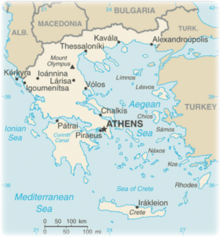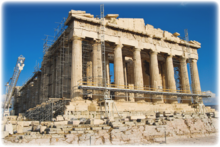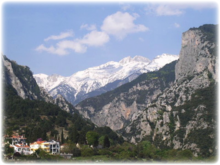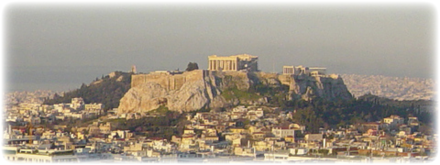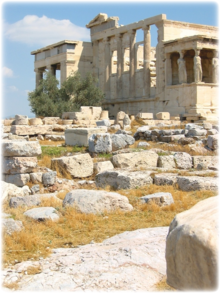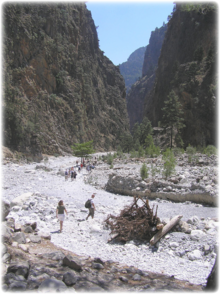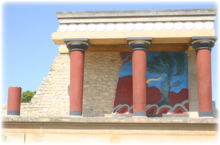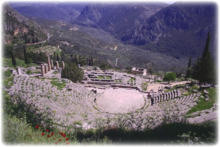
General Information
| Languages : | Greek |
| Currency : | Euro (EUR) |
| Time Zone : | EST +7hrs |
| Capital City : | Athens |
| Population : | 10 Million |
| Government : | Parliamentary Republic |
| Total Area : | 50,942 mi² |
| Climate : | Temperate; mild, wet winters; hot, dry summers |
| National Holidays: | Independence Day, 25 March |
| Additional Info: | Walk through Olive Groves and many ancient sites. Four-fifths of Greece consists of mountains or hills, making the country one of the most mountainous in Europe |
Destination Activities
»»» Check out Special Destination: Greek_Islands
Activity Details
Greece, officially the Hellenic, is situated on the southern end of the Balkan Peninsula. It borders Albania, the former Yugoslav Republic of Macedonia and Bulgaria to the north, and Turkey to the east. The Aegean Sea lies to the east and south of mainland Greece, while the Ionian Sea lies to the west. Both parts of the Eastern Mediterranean basin feature a vast number of islands.
Greece consists of a mountainous and craggy mainland jutting out into the sea at the southern end of the Balkans, the Peloponnesus peninsula (separated from the mainland by the canal of the Isthmus of Corinth), and numerous islands (around 2,000), including Crete, Euboea, Lesbos, Chios, the Dodecanese and the Cycladic groups of the Aegean Sea as well as the Ionian Sea islands. Greece has the tenth longest coastline in the world with 14,880 km; its land boundary is 1,160 km (721 miles).
Cultural Activities
Cultural adventure travelers: prepare for a treat. This is one of the best destinations for ancient ruins, as well as being fascinating for its position between the east and west cultures, which both heavily influence the country.
» Athens - Athens, the capital and largest city in Greece, dominates the Attica periphery: as one of the world's oldest cities, its recorded history spans at least 3,000 years. Ancient Athens was a powerful city-state. A center for the arts, learning and philosophy, home of Plato's Akademia and Aristotle's Lyceum. Athens was also the birthplace of Socrates, Pericles, Sophocles and its many other prominent philosophers, writers and politicians of the ancient world.
Athens is located at a transition point between the Mediterranean and the Alpine climatic zones. The city enjoys a typical Mediterranean climate, with the greatest amounts of precipitation mainly occurring from mid-October to mid-April. This town is home to the Acropolis, Parthenon and the National Museum, as well as being situated next to the Mediterranean when you need some time to relax and enjoy the beautiful sea views.
» The Acropolis is a flat-topped rock which rises 150 m (512 ft) above sea level in the city of Athens. It was also known as Cecropia, after the legendary serpent-man, Kekrops or Cecrops, the first Athenian king. The entrance to the Acropolis was a monumental gateway called the Propylaea. To the south of the entrance is the tiny Temple of Athena Nike. A bronze statue of Athena, sculpted by Phidias, originally stood at its center. At the center of the Acropolis is the Parthenon or Temple of Athena Parthenos (Athena the Virgin). East of the entrance and north of the Parthenon is the temple known as the Erechtheum. South of the platform that forms the top of the Acropolis there are the also the remains of an outdoor theater called Theater of Dionysus. A few hundred meters away, there is the, now partially reconstructed Theatre of Herodes Atticus.
» The Parthenon is a temple of the Greek goddess Athena built in the 5th century BCE on the Acropolis of Athens. It is the most important surviving building of Classical Greece, generally considered to be the culmination of the development of the Doric order. Its decorative sculptures are considered one of the high points of Greek art. The Parthenon is regarded as an enduring symbol of ancient Greece and of Athenian democracy, and is one of the world's greatest cultural monuments. The Greek Ministry of Culture is currently carrying out a program of restoration and reconstruction.
» Olympia - The birthplace of the Olympic Games: Olympia, a sanctuary of ancient Greece in Elis, is known for having been the site of the Olympic Games in classical times. Games were held every Olympiad (every four years). The Olympic Games can be dated back possibly further than 776 BC. In 394 emperor Theodosius I abolished them because they were reminiscent of paganism. Olympia's ruins are impressive. You can visit the original Olympic Stadium, walk through the remains of some of the buildings where athletes trained and temples where they made offerings, and visit the excellent on-site museum. While there, look out for the Leonidaion, the lodging place for athletes taking part in the Games. It was located at the southwest edge of the sanctuary and was the largest building on the site. It was constructed around 330BCE and was funded and designed by Leonidas of Naxos.
» Knossos If stopping by the Island of Crete, be sure to check the palace as Knossos - the largest Bronze Age archaeological site on Crete, probably the ceremonial and political center of the Minoan civilization and culture. Near the main city of Heraklion, it has been substantially if imaginatively "rebuilt", making the site accessible to the casual visitor in a way that a field of unmarked ruins is not.
Climbing
Four-fifths of Greece consist of mountains or hills, making the country one of the most mountainous in Europe. Western Greece contains a number of lakes and wetlands and it is dominated by the Pindus mountain range. Pindus has a maximum elevation of 2,636m (8,648 ft) and it is essentially a prolongation of the Dinaric Alps.
Lefka Ori ("White Mountains" in Greek) is a mountain range located in Western Crete, in Chania and Rethymno prefectures. The White Mountains occupy a good part of the center of West Crete and are the main feature of the region. They are mainly made of limestone, granite and dolomite and are called White Mountains because they are covered with snow until late in the spring. The highest summit is Pachnes (2.453m) and there are over 30 summits that are over 2.000 m. high. The Lefka Ori also have about 50 gorges, the most famous being the Samaria Gorge. Another characteristic of the mountain range is the plateau of Omalos which is a round plain surrounded by mountains, at an altitude of 1100m.
Mount Olympus is the highest mountain in Greece at 2,919m (9,576 ft). Since its base is located at sea level, it is one of the highest mountains in Europe, in real absolute altitude from base to top. It is situated in mainland Greece, about 60 miles away from Thessaloniki, Greece's second largest city. The highest peak on Mount Olympus is Mitikas at 2,919m high (9,576ft). Any climb to Mount Olympus starts from the town of Litochoro. Mountain climbers at beginner level can take on this peak without too much difficulty. It is a wilderness experience, as you pass through temperate rain forest, stands of towering old growth trees, and alpine lakes before making camp at Glacier Meadows. From here glacier climbing and rock scrambling lead to the summit.
Rock climbing: Kalymnos is a Greek island and municipality in the south-eastern Aegean Sea. It belongs to the Dodecanese and is located to the west of the peninsula of Bodrum (the ancient Halicarnassos), between the islands of Kos and Leros. Kalymnos is about two to five hours away by sea from Rhodes. Kalymnos is mainly mountainous, with a complicated pattern. Earthquakes are a frequent occurrence around Kalymnos. In 1996, an Italian climbing couple discovered Kalymnos as a climbers' paradise. At the moment there are about 44 crags with more than 500 single pitch routes. There are many 'easy' routes (up to level: 6a) - there is no limit to the upper side.
Hiking
The Samaria Gorge is a national park on the island of Crete. It was created by a small river running between the White Mountains and Mount Volakias. The gorge is 11 miles long and the second longest in Europe. The most famous part of the gorge is the section known as the 'Iron Gates', where the sides of the gorge close to about 12ft and reach up to 1,640ft high. One of the "musts" for a tourist to the island is to complete the walk down the gorge from the Omalos plateau to Agia Roumeli on the Libyan Sea, at which point tourists sail to the nearby village of Hora Sfakion and catch a coach back to Chania. The walk takes between four and seven hours and can be strenuous, especially in high summer.
Delphi is an archaeological site and a modern town in Greece on the south-western spur of Mount Parnassus in the valley of Phocis. Southwest of Delphi, 9.5 miles away, is the harbor-city of Kirrha on the Corinthian Gulf. Dipping gently down the slopes of Mt Parnassos from the Corycean Grotto to the village of Delphi is a fantastic day-hike. This well-marked, mapped, 8.5 mile route down the mountain is a blend of two historic footpaths. One is the Ancient Footpath (Archaio Monopati) that took Pan Worshippers up from the ancient temples of Delphi to the Corycean Grotto to celebrate rites of Pan. The second footpath is the European Union E4 Long Distance Footpath that passes over Mt. Parnassos on its way from Gibraltar to Crete.
The Cyclades are a Greek island group in the Aegean Sea, south-east of the mainland of Greece; and an administrative prefecture of Greece. Best to come in spring and fall, ideally in late April-June or September-October, when temperatures are lower and the islands are less tourist-ridden. The interior of the island of Naxos is a paradise for hikers. You may have to catch a bus or a taxi first in order to get to the point of departure, because there are not a lot of hikes in the immediate vicinity of Chora. Try the four-villages-route (Apiranthos - Moni - Chalki - Filoti) - an ideal hike if you only do one hike on this island. Expect to spend about 6 hours hiking from village to village.
Photography
If you have adventure-travel related experience in this region and would like to add content to this page, please contact us to learn how.

